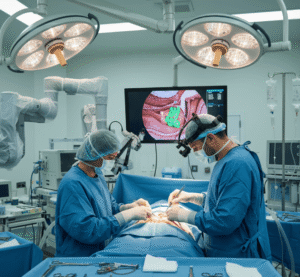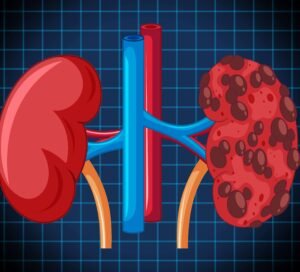Overview
Braxton Hicks contractions are irregular, often painless uterine contractions that occur during pregnancy. They are sometimes referred to as “practice contractions” because they prepare the uterus for labor, but they do not indicate the onset of true labor. These contractions can start as early as the second trimester but are more commonly noticed in the third trimester.
In South Korea, obstetrics and maternity care centers provide comprehensive prenatal monitoring and guidance to help pregnant women distinguish between Braxton Hicks contractions and real labor, ensuring safe and healthy pregnancies.
Key Facts
Highlights:
➡️ Braxton Hicks contractions are usually irregular and unpredictable, unlike true labor contractions.
➡️ They help tone the uterine muscles and improve blood flow to the placenta.
➡️ Most commonly felt in the second or third trimester, especially in first-time pregnancies.
➡️ They are generally painless, though some women may experience mild discomfort or pressure.
➡️ South Korean prenatal clinics provide education, monitoring, and support for managing these contractions.
What is Braxton Hicks Contractions?
Braxton Hicks contractions are intermittent tightening of the uterus that do not lead to cervical dilation or labor progression.
Characteristics include:
- Irregular timing and duration
- Mild intensity, often felt as a tightening or pressure in the lower abdomen
- Short duration, usually 30 seconds to 2 minutes
- No progressive increase in frequency, duration, or intensity
- Often relieved by changing position, resting, or hydration
These contractions are normal during pregnancy and are considered part of the uterus preparing for eventual labor.
What Symptoms are Related to Braxton Hicks Contractions?
Symptoms may vary depending on the individual:
- Tightening of the abdomen or lower belly
- Mild discomfort, sometimes mistaken for menstrual cramps
- No consistent pattern in timing or intensity
- Pain usually does not radiate to the back, unlike true labor
- Irregular intervals, which do not shorten progressively
Highlights:
➡️ Braxton Hicks contractions are not accompanied by cervical dilation.
➡️ Hydration, movement, or changing positions often relieve symptoms.
What Causes / Possible Causes of Braxton Hicks Contractions?
Highlights:
➡️ Uterine muscle preparation: Strengthens the uterine wall for labor.
➡️ Increased uterine blood flow: Improves circulation to support fetal growth.
➡️ Dehydration or physical activity: May trigger more noticeable contractions.
➡️ Full bladder or pressure on the uterus: Can make contractions more pronounced.
➡️ Sexual activity: Orgasm or stimulation can sometimes induce mild contractions.
➡️ Multiple pregnancies: Women carrying twins or multiples may experience stronger or more frequent contractions.
➡️ Gestational age: More common and noticeable in the third trimester as the uterus grows.
When Should I See My Doctor?
Highlights:
➡️ If contractions become regular, painful, or frequent, as this may indicate preterm labor.
➡️ If accompanied by vaginal bleeding, fluid leakage, or a decrease in fetal movement.
➡️ If contractions are very intense or last longer than two minutes.
➡️ If unsure whether contractions are Braxton Hicks or true labor, seek medical guidance.
➡️ Early consultation ensures proper evaluation, ruling out complications and protecting both mother and baby.
Care and Treatment
Management of Braxton Hicks contractions focuses on comfort and prevention of unnecessary stress:
Highlights:
➡️ Hydration: Drinking water or electrolyte fluids can reduce contractions triggered by dehydration.
➡️ Position Changes: Lying down, walking, or gentle stretching can relieve discomfort.
➡️ Relaxation Techniques: Breathing exercises, prenatal yoga, or warm baths may ease muscle tension.
➡️ Monitoring: Keeping track of contraction frequency, duration, and intensity.
➡️ Avoid Overexertion: Resting and avoiding heavy physical activity can minimize triggers.
➡️ Patient Education: Learning to differentiate between Braxton Hicks contractions and true labor contractions.
➡️ Medical Guidance: Consulting healthcare providers if there are any doubts or unusual symptoms.
Treatment Options in Korea
South Korea provides comprehensive prenatal care and guidance for Braxton Hicks contractions:
Highlights:
➡️ Obstetrics and Gynecology Clinics: Education, monitoring, and reassurance for expectant mothers.
➡️ Prenatal Monitoring: Ultrasound and fetal heart rate monitoring to ensure fetal well-being.
➡️ Patient Counseling: Guidance on hydration, activity, and relaxation techniques.
➡️ Maternity Programs: Structured prenatal classes to differentiate practice contractions from labor.
➡️ Specialist Support: For women experiencing frequent or uncomfortable contractions, obstetricians provide tailored management strategies.
➡️ Multidisciplinary Care: Collaboration among obstetricians, midwives, and prenatal physiotherapists for optimal maternal comfort.
➡️ Medical Tourism Support: For international patients, Korea provides full prenatal evaluation, education, and monitoring services.













